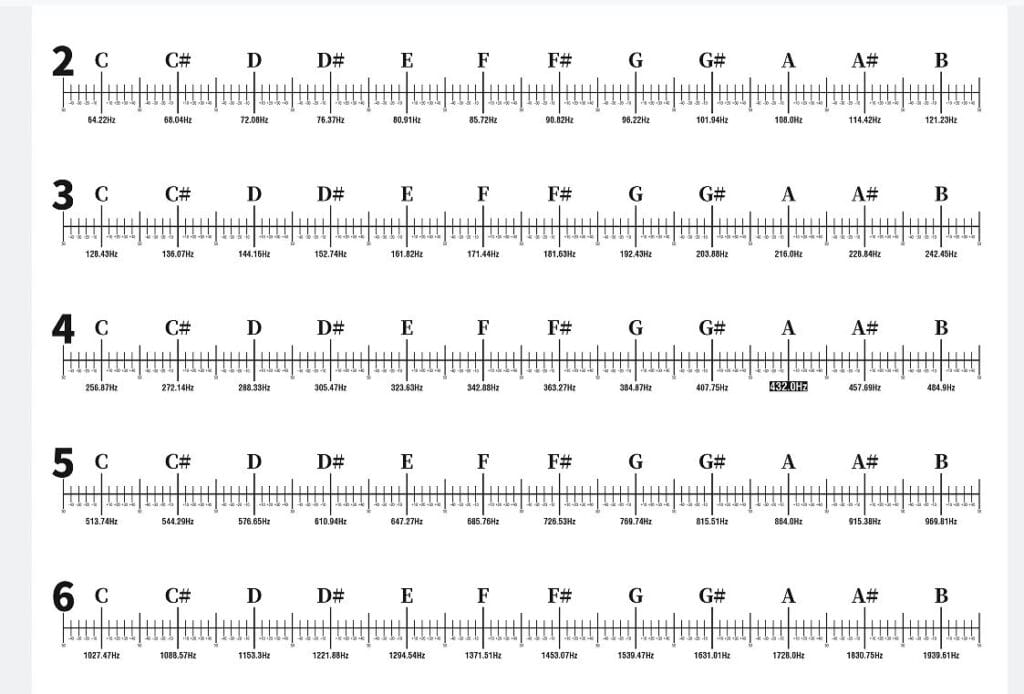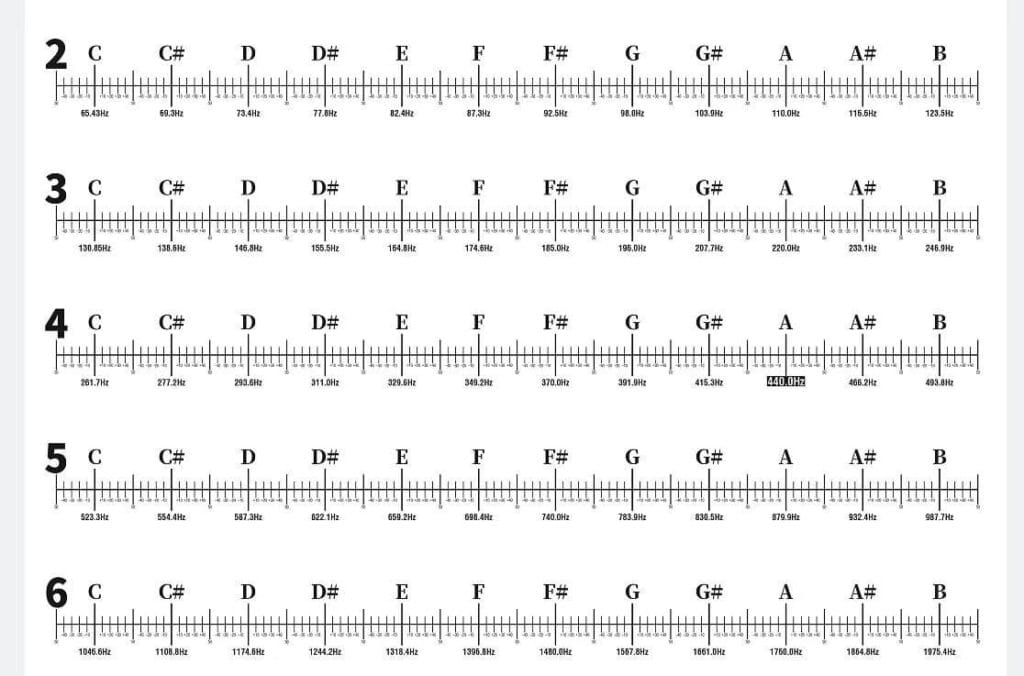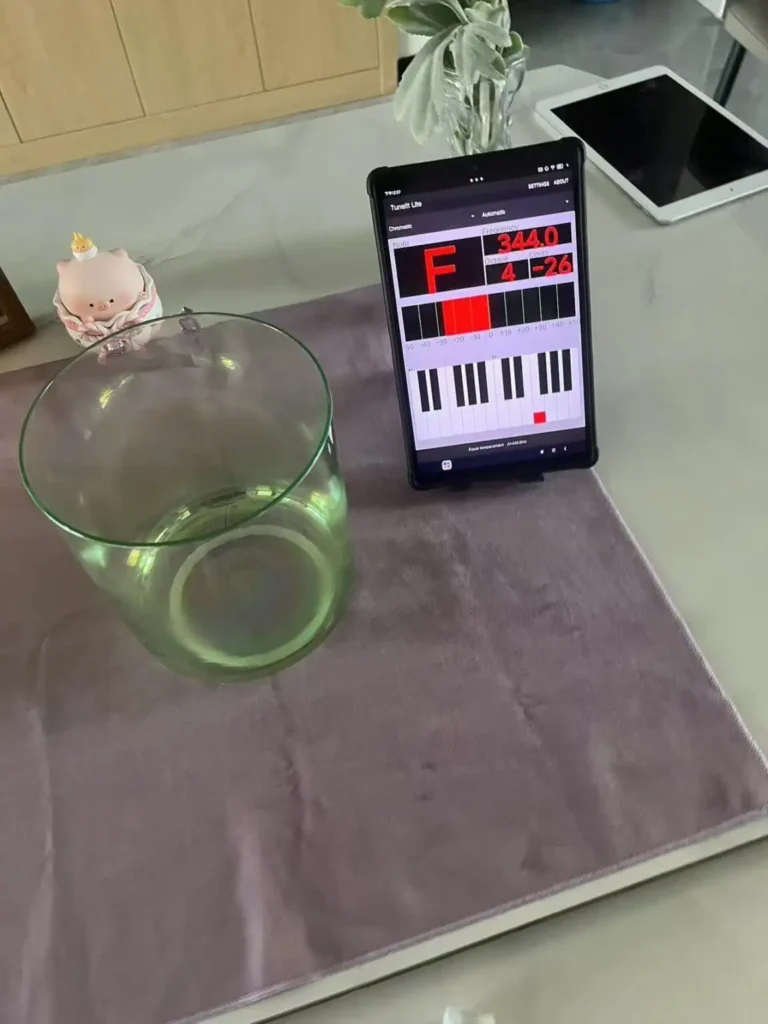Crystal singing bowls have become essential instruments in sound healing, meditation, and spiritual practice, offering practitioners access to pure, sustained tones that facilitate deep relaxation, consciousness expansion, and therapeutic intervention. Understanding the fundamental relationships between frequency, octave, and musical note in crystal singing bowls proves crucial for practitioners seeking to optimize their acoustic effectiveness, create harmonious bowl combinations, and achieve specific therapeutic or spiritual outcomes through informed instrument selection and application.
The acoustic behavior of crystal singing bowls follows established principles of musical acoustics and frequency relationships that connect these modern instruments to ancient musical knowledge while providing scientific foundation for their therapeutic and spiritual applications. These relationships enable systematic approach to bowl selection, combination planning, and therapeutic protocol development that maximizes acoustic effectiveness while respecting traditional wisdom about sound and healing.
Frequency measurement provides the objective foundation for understanding crystal singing bowl acoustics, with each bowl producing a fundamental frequency that determines its musical note designation and harmonic relationships with other instruments. This frequency-based approach enables precise acoustic analysis while supporting reproducible therapeutic protocols and musical applications that rely on specific acoustic characteristics and harmonic relationships.
The correspondence between frequency, octave, and note creates a systematic framework for organizing crystal singing bowl collections, designing therapeutic interventions, and creating musical experiences that harness the full potential of these remarkable instruments while maintaining scientific precision and cultural authenticity in their application.

Fundamental Acoustic Principles
Frequency Definition and Measurement
Sound wave frequency represents the fundamental physical property that determines the pitch and musical characteristics of crystal singing bowls, measured in Hertz (Hz) as the number of complete vibration cycles occurring per second. Understanding frequency provides the scientific foundation for all other acoustic relationships and enables precise communication about bowl characteristics and therapeutic applications.
The physical nature of sound waves involves alternating compression and rarefaction of air molecules that create the acoustic energy we perceive as sound. In crystal singing bowls, these vibrations originate from the bowl’s rim when struck or rubbed, creating standing wave patterns throughout the crystalline structure that produce the sustained, pure tones characteristic of quality crystal bowls.
Crystal singing bowls produce complex acoustic signatures that include a fundamental frequency along with harmonic overtones that contribute to their distinctive sound quality and therapeutic effectiveness. The fundamental frequency determines the musical note designation while the harmonic content creates the rich, complex tones that make crystal bowls particularly effective for meditation and healing applications.
Frequency stability in crystal singing bowls depends on various factors including temperature, humidity, manufacturing quality, and playing technique, with high-quality bowls maintaining consistent frequency output under normal operating conditions. Understanding these stability factors enables effective use while protecting acoustic quality through proper handling and environmental control.
Human auditory perception of frequency creates the subjective experience of musical pitch, with the average human ear capable of detecting frequencies from approximately 20 Hz to 20,000 Hz. Crystal singing bowls typically operate within the range of human hearing that provides maximum therapeutic and musical effectiveness while avoiding frequencies that could cause discomfort or hearing damage.
Measurement accuracy for crystal singing bowl frequencies requires appropriate instruments and techniques that can detect fundamental frequencies while distinguishing them from harmonic content. Professional-grade electronic tuners, frequency analysis software, and specialized acoustic measurement equipment provide the precision necessary for accurate frequency determination and quality assessment.
Octave Relationship Principles
The octave represents one of the most fundamental relationships in musical acoustics, defined as the interval between two frequencies where the higher frequency equals exactly twice the lower frequency. This 2:1 frequency ratio creates the acoustic relationship that the human ear perceives as the same note at different pitch levels, providing the foundation for musical organization and harmonic understanding.
Mathematical precision in octave relationships enables systematic organization of musical frequencies across the entire audible spectrum, with each octave containing twelve semitone intervals in the Western equal temperament system. This mathematical structure provides the framework for understanding crystal singing bowl frequency relationships and their musical applications.
The equal temperament tuning system divides each octave into twelve equal semitone intervals, creating a logarithmic frequency progression that enables musical instruments to play in all keys while maintaining consistent harmonic relationships. Understanding this system proves essential for selecting crystal singing bowls that work harmoniously together while serving specific musical and therapeutic applications.
Octave equivalence in human auditory perception means that frequencies separated by one or more octaves sound like the same musical note at different pitch levels. This perceptual phenomenon enables therapeutic and musical applications that utilize different octaves of the same note to achieve specific acoustic effects while maintaining fundamental harmonic relationships.
Crystal singing bowls demonstrate octave relationships through their size and frequency characteristics, with larger bowls typically producing lower frequencies and smaller bowls creating higher frequencies within predictable mathematical relationships. Understanding these size-frequency relationships guides bowl selection while enabling prediction of acoustic characteristics based on physical dimensions.
Harmonic resonance between crystal singing bowls in octave relationships creates particularly powerful acoustic effects that enhance both therapeutic and musical applications. When bowls tuned to octave relationships are played together, they create reinforcing harmonic patterns that amplify healing effects while producing aesthetically pleasing acoustic combinations.
Musical Note Naming Systems


The Western musical note naming system utilizes seven letter names (A, B, C, D, E, F, G) combined with accidental symbols (sharp # and flat ♭) to designate all twelve chromatic pitches within each octave. This alphabetical system provides standardized communication about musical pitches while enabling precise specification of crystal singing bowl frequencies and their musical relationships.
International standard pitch defines A4 (the A above middle C) as exactly 440 Hz, providing the reference frequency from which all other musical pitches are calculated in the equal temperament system. This standardization enables consistent communication about crystal singing bowl frequencies while ensuring compatibility with other musical instruments and applications.
Scientific pitch notation combines letter names with octave numbers to create unambiguous pitch designations that specify exact frequencies throughout the audible range. This system designates middle C as C4, with higher octaves receiving higher numbers and lower octaves receiving lower numbers, creating a comprehensive system for crystal singing bowl frequency specification.
Alternative tuning systems, including A4 = 432 Hz and various historical temperaments, offer different frequency relationships that some practitioners prefer for their perceived therapeutic or aesthetic advantages. Understanding these alternative systems enables informed choice while respecting different philosophical approaches to sound healing and musical practice.
Enharmonic equivalents occur when different note names refer to the same frequency, such as F# and G♭ in equal temperament tuning. Understanding these equivalent relationships prevents confusion while enabling flexible communication about crystal singing bowl frequencies using different naming conventions.
Microtonal variations and just intonation systems create frequency relationships based on simple mathematical ratios rather than equal temperament’s logarithmic divisions. Some crystal singing bowl practitioners prefer these “pure” frequency relationships for their perceived enhanced harmonic resonance and therapeutic effectiveness.
Crystal Bowl Frequency Classification System
Standard Frequency Ranges
Crystal singing bowls typically span a frequency range from approximately 100 Hz for the largest bowls to over 4000 Hz for the smallest sizes, covering roughly six octaves of musical pitch that encompasses the fundamental frequencies used in most therapeutic and musical applications. This broad frequency range enables comprehensive chakra work, musical composition, and therapeutic intervention across diverse applications and individual needs.
The relationship between bowl size and frequency follows predictable patterns based on the physics of vibrating circular plates, with bowl diameter serving as the primary determinant of fundamental frequency. Larger bowls with greater diameters produce lower frequencies while smaller bowls create higher frequencies, enabling practitioners to select appropriate sizes for desired pitch ranges and therapeutic applications.
Manufacturing precision in crystal singing bowl production affects frequency accuracy and consistency, with professional-grade bowls typically maintaining frequency tolerances within ±10 cents (approximately ±0.6%) of specified pitch. Understanding quality standards enables informed selection while ensuring bowls meet accuracy requirements for professional therapeutic and musical applications.
Wall thickness variations in crystal singing bowls influence both frequency and tonal quality, with thicker walls generally producing slightly lower frequencies and longer sustain times compared to thinner walls of the same diameter. These subtle variations affect acoustic characteristics while providing options for fine-tuning acoustic preferences and therapeutic applications.
Crystal composition and manufacturing processes create subtle variations in frequency characteristics even among bowls of identical size, with factors including crystal purity, annealing processes, and manufacturing techniques affecting final acoustic properties. Understanding these manufacturing variables enables appreciation of individual bowl characteristics while guiding quality assessment and selection decisions.
Temperature sensitivity affects crystal singing bowl frequencies, with most bowls experiencing slight frequency increases as temperature rises and decreases as temperature falls. This thermal sensitivity requires consideration in professional applications while highlighting the importance of environmental stability for consistent acoustic performance.
Note Correspondence Tables
The complete chromatic scale provides the framework for organizing crystal singing bowl frequencies according to their musical note designations, with each semitone representing a frequency ratio of approximately 1.059:1 in equal temperament tuning. Understanding this mathematical progression enables calculation of expected frequencies for any desired musical note while facilitating systematic bowl collection development.
C Note Frequencies Across Octaves:
- C2: 65.41 Hz
- C3: 130.81 Hz
- C4: 261.63 Hz (Middle C)
- C5: 523.25 Hz
- C6: 1046.50 Hz
- C7: 2093.00 Hz
D Note Frequencies Across Octaves:
- D2: 73.42 Hz
- D3: 146.83 Hz
- D4: 293.66 Hz
- D5: 587.33 Hz
- D6: 1174.66 Hz
- D7: 2349.32 Hz
E Note Frequencies Across Octaves:
- E2: 82.41 Hz
- E3: 164.81 Hz
- E4: 329.63 Hz
- E5: 659.25 Hz
- E6: 1318.51 Hz
- E7: 2637.02 Hz
F Note Frequencies Across Octaves:
- F2: 87.31 Hz
- F3: 174.61 Hz
- F4: 349.23 Hz
- F5: 698.46 Hz
- F6: 1396.91 Hz
- F7: 2793.83 Hz
G Note Frequencies Across Octaves:
- G2: 98.00 Hz
- G3: 196.00 Hz
- G4: 392.00 Hz
- G5: 783.99 Hz
- G6: 1567.98 Hz
- G7: 3135.96 Hz
A Note Frequencies Across Octaves:
- A2: 110.00 Hz
- A3: 220.00 Hz
- A4: 440.00 Hz (Standard Reference)
- A5: 880.00 Hz
- A6: 1760.00 Hz
- A7: 3520.00 Hz
B Note Frequencies Across Octaves:
- B2: 123.47 Hz
- B3: 246.94 Hz
- B4: 493.88 Hz
- B5: 987.77 Hz
- B6: 1975.53 Hz
- B7: 3951.07 Hz
Sharp and flat notes create additional frequency options between the natural notes, providing the complete chromatic spectrum necessary for comprehensive musical and therapeutic applications. Understanding these chromatic relationships enables selection of bowls that create specific harmonic intervals and therapeutic effects while maintaining musical accuracy and aesthetic appeal.
Octave Marking Systems
Scientific pitch notation provides the most precise system for designating crystal singing bowl frequencies, using letter names combined with octave numbers that specify exact pitch locations within the frequency spectrum. This system eliminates ambiguity while enabling clear communication about specific bowl frequencies and their relationships to musical and therapeutic applications.
The octave numbering system in scientific notation designates the octave containing middle C as octave 4, with C4 representing middle C at 261.63 Hz. Higher octaves receive higher numbers (C5, C6, C7) while lower octaves use lower numbers (C3, C2, C1), creating a systematic framework that covers the entire range of crystal singing bowl frequencies.
Sound healing practitioners often use simplified octave designations that focus on practical therapeutic applications rather than strict musical accuracy, with systems that emphasize chakra correspondences and therapeutic effects over precise frequency relationships. Understanding both systems enables effective communication across different professional communities while maintaining accuracy where required.
Commercial labeling practices for crystal singing bowls vary among manufacturers, with some using scientific notation while others employ simplified systems that may combine note names with descriptive terms like “heart chakra” or “high frequency.” Understanding these labeling variations prevents confusion while enabling accurate assessment of actual bowl frequencies and characteristics.
International standardization efforts aim to create consistent labeling and frequency specifications for crystal singing bowls, reducing confusion while enabling reliable communication across different markets and applications. Supporting these standardization efforts enhances professional practice while protecting consumers from misleading or inaccurate product information.
Chakra System Frequency Correspondence

Traditional Chakra Note Assignments
The seven primary chakras correspond to specific musical notes in traditional Western sound healing practice, creating a systematic framework that connects ancient Eastern wisdom about energy centers with Western musical theory and frequency relationships. This correspondence provides practical guidance for therapeutic applications while honoring both cultural traditions and scientific acoustic principles.
Root Chakra (Muladhara) – C Note:
The root chakra traditionally corresponds to the note C, representing grounding, stability, and connection to Earth energy. Crystal singing bowls tuned to various octaves of C (typically C3-C5) provide foundational support for chakra balancing work while creating acoustic experiences that promote feelings of security and physical grounding.
Sacral Chakra (Svadhisthana) – D Note:
The sacral chakra corresponds to D note frequencies, supporting creativity, sexuality, and emotional flow. D note crystal bowls (commonly D3-D5) facilitate emotional release and creative inspiration while supporting healthy expression of personal power and interpersonal relationships through their warm, flowing acoustic qualities.
Solar Plexus Chakra (Manipura) – E Note:
The solar plexus chakra traditionally aligns with E note frequencies, supporting personal power, confidence, and digestive health. E note crystal bowls (typically E3-E5) provide energizing acoustic stimulation that promotes self-confidence while supporting healthy metabolism and personal empowerment through their bright, penetrating tones.
Heart Chakra (Anahata) – F Note:
The heart chakra corresponds to F note frequencies, facilitating love, compassion, and emotional healing. F note crystal bowls (commonly F3-F5) create nurturing acoustic environments that support emotional opening while promoting healing of relationship issues and development of unconditional love through their gentle, embracing tonal qualities.
Throat Chakra (Vishuddha) – G Note:
The throat chakra aligns with G note frequencies, supporting communication, self-expression, and truth speaking. G note crystal bowls (typically G3-G5) enhance vocal expression and authentic communication while clearing energetic blockages that inhibit honest self-expression through their clear, resonant acoustic characteristics.
Third Eye Chakra (Ajna) – A Note:
The third eye chakra traditionally corresponds to A note frequencies, supporting intuition, psychic abilities, and spiritual insight. A note crystal bowls (commonly A3-A5) facilitate meditation and consciousness expansion while enhancing intuitive abilities and spiritual perception through their penetrating, consciousness-altering acoustic effects.
Crown Chakra (Sahasrara) – B Note:
The crown chakra aligns with B note frequencies, supporting spiritual connection, enlightenment, and cosmic consciousness. B note crystal bowls (typically B3-B5) facilitate transcendent experiences and spiritual awakening while connecting practitioners to higher dimensional awareness through their ethereal, uplifting acoustic qualities.
Specific Frequency Values
Practical chakra healing applications require specific frequency recommendations that balance traditional correspondences with acoustic effectiveness and individual response patterns. The following frequency ranges represent commonly used and effective options for chakra-based crystal singing bowl therapy, providing starting points for therapeutic protocol development while allowing flexibility for individual customization.
Root Chakra Frequency Options:
- C3 (130.81 Hz): Deep grounding effects, suitable for anxiety and insecurity
- C4 (261.63 Hz): Balanced grounding energy, appropriate for general stability work
- C5 (523.25 Hz): Lighter grounding effects, suitable for energetic sensitivity
Sacral Chakra Frequency Options:
- D3 (146.83 Hz): Deep emotional release, effective for trauma and blockages
- D4 (293.66 Hz): Balanced emotional flow, appropriate for creative work
- D5 (587.33 Hz): Light emotional activation, suitable for inspiration and joy
Solar Plexus Chakra Frequency Options:
- E3 (164.81 Hz): Deep empowerment work, effective for confidence building
- E4 (329.63 Hz): Balanced personal power, appropriate for general strengthening
- E5 (659.25 Hz): Light activation energy, suitable for mental clarity and focus
Heart Chakra Frequency Options:
- F3 (174.61 Hz): Deep heart healing, effective for emotional trauma recovery
- F4 (349.23 Hz): Balanced heart opening, appropriate for relationship healing
- F5 (698.46 Hz): Light heart activation, suitable for joy and compassion cultivation
Throat Chakra Frequency Options:
- G3 (196.00 Hz): Deep communication healing, effective for expression blockages
- G4 (392.00 Hz): Balanced expression support, appropriate for authentic communication
- G5 (783.99 Hz): Light vocal activation, suitable for creative expression and singing
Third Eye Chakra Frequency Options:
- A3 (220.00 Hz): Deep intuitive opening, effective for psychic development
- A4 (440.00 Hz): Balanced intuitive awareness, appropriate for meditation enhancement
- A5 (880.00 Hz): Light consciousness expansion, suitable for spiritual insight
Crown Chakra Frequency Options:
- B3 (246.94 Hz): Deep spiritual grounding, effective for integrated awakening
- B4 (493.88 Hz): Balanced spiritual connection, appropriate for meditation and prayer
- B5 (987.77 Hz): Light transcendent experiences, suitable for consciousness expansion
Scientific Validation and Practice

Contemporary research into chakra system correspondences with specific frequencies provides increasing scientific support for traditional knowledge while revealing mechanisms through which sound frequencies affect human physiology and consciousness. Understanding both traditional wisdom and scientific findings enables informed therapeutic application while maintaining respect for cultural heritage and empirical evidence.
Physiological research demonstrates that specific frequencies can influence brainwave patterns, nervous system function, and hormonal responses in ways that correspond to traditional chakra system understanding. This scientific validation supports the therapeutic effectiveness of frequency-specific interventions while providing rational explanations for observed healing effects.
Individual variation in frequency response requires personalized approaches to chakra healing that may deviate from standard correspondences based on personal history, constitutional factors, and current energy patterns. Experienced practitioners learn to assess individual needs while adapting traditional protocols to optimize therapeutic effectiveness for specific clients and situations.
Clinical applications of chakra-based crystal singing bowl therapy demonstrate effectiveness for various conditions including anxiety, depression, chronic pain, and spiritual disconnection. Understanding both traditional approaches and clinical research enables evidence-based therapeutic practice while honoring traditional wisdom and cultural authenticity.
Long-term therapeutic outcomes depend on consistent application of appropriate frequencies combined with other healing modalities that address physical, emotional, and spiritual aspects of health and wellbeing. Crystal singing bowl therapy works most effectively as part of comprehensive healing approaches that integrate multiple therapeutic modalities and lifestyle modifications.
Musical Theory Applications
Harmonic Principles
Harmonic relationships between crystal singing bowl frequencies create the foundation for effective combination use, with certain frequency intervals producing consonant, pleasing acoustic effects while others create dissonance that may serve specific therapeutic purposes or artistic intentions. Understanding these harmonic principles enables systematic approach to bowl combination while optimizing acoustic effectiveness and aesthetic appeal.
Perfect Octave (2:1 Frequency Ratio):
Octave relationships create the most consonant harmonic intervals, with bowls tuned to octave relationships reinforcing each other’s fundamental frequencies while creating powerful resonance effects. Octave combinations work effectively for chakra activation, meditation support, and musical applications requiring harmonic stability and acoustic power.
Perfect Fifth (3:2 Frequency Ratio):
Fifth intervals create strong harmonic consonance that supports both therapeutic and musical applications, with the mathematical simplicity of the 3:2 ratio producing acoustic stability and pleasant aesthetic effects. Common fifth combinations include C-G, D-A, E-B, F-C, G-D, A-E, and B-F# relationships across various octaves.
Major Third (5:4 Frequency Ratio):
Major third intervals create warm, uplifting harmonic effects that enhance emotional healing and joy-based therapeutic work. These intervals include relationships like C-E, D-F#, E-G#, F-A, G-B, A-C#, and B-D# that provide harmonic richness while maintaining acoustic stability and emotional warmth.
Perfect Fourth (4:3 Frequency Ratio):
Fourth intervals offer stable harmonic support that works effectively for grounding and centering applications, with mathematical simplicity that creates predictable acoustic behavior. Common fourth relationships include C-F, D-G, E-A, F-B♭, G-C, A-D, and B-E combinations that provide harmonic foundation while supporting therapeutic stability.
Dissonant intervals, including minor seconds and major sevenths, create acoustic tension that may serve specific therapeutic purposes including energy activation, emotional release, or consciousness alteration. Understanding when and how to use dissonant combinations requires advanced training while offering powerful tools for experienced practitioners.
Scales and Tonalities
Major scale relationships provide harmonious bowl combinations that create uplifting, positive acoustic environments suitable for joy-based therapy, celebration, and general wellbeing enhancement. Understanding major scale construction enables creation of bowl sets that work together seamlessly while providing comprehensive harmonic support for various applications.
C Major Scale Bowl Combination:
C – D – E – F – G – A – B – C provides a complete major scale that creates harmonious acoustic environments supporting joy, celebration, and general positive energy cultivation. This combination offers maximum harmonic flexibility while enabling both sequential and simultaneous playing techniques.
G Major Scale Bowl Combination:
G – A – B – C – D – E – F# – G creates bright, uplifting acoustic effects that support confidence building, creative inspiration, and energetic activation. The single sharp note (F#) provides subtle harmonic complexity while maintaining overall major tonality characteristics.
Minor scale relationships create introspective, contemplative acoustic environments that support deep emotional work, grief processing, and spiritual introspection. Understanding minor scale construction enables creation of bowl combinations that facilitate inner exploration while providing harmonic support for transformative healing work.
A Minor Scale Bowl Combination:
A – B – C – D – E – F – G – A provides natural minor tonality that supports emotional depth and introspective work without requiring altered pitches. This combination creates contemplative acoustic environments while maintaining harmonic accessibility and emotional safety.
Pentatonic scale systems offer simplified harmonic relationships that work effectively across cultural boundaries while providing acoustic combinations that rarely create unpleasant dissonance. These five-note scales enable flexible bowl combinations that support both therapeutic and musical applications with minimal harmonic complexity.
C Major Pentatonic Combination:
C – D – E – G – A creates universally pleasing harmonic relationships that work effectively for meditation, relaxation, and general therapeutic applications. This combination eliminates the potentially unstable fourth and seventh degrees while maintaining harmonic richness and melodic flexibility.
All combinations: https://dorhymigroup.com/product-category/bundle/
Rhythm and Timing
Sequential activation patterns enable systematic chakra balancing and energy building techniques that progress through frequency relationships in organized sequences designed to optimize therapeutic effects while maintaining participant comfort and acoustic coherence. Understanding timing principles enhances therapeutic effectiveness while preventing overwhelming or chaotic acoustic experiences.
Ascending frequency sequences (low to high) create energizing effects that support activation, empowerment, and consciousness expansion, with gradual frequency increases that guide participants through progressive states of alertness and spiritual awakening. These patterns work effectively for morning practice, energy building, and therapeutic protocols requiring activation and stimulation.
Descending frequency sequences (high to low) create calming, grounding effects that support relaxation, stress reduction, and integration of therapeutic experiences. These patterns guide participants toward deeper states of relaxation while facilitating integration of healing experiences and return to normal consciousness states.
Circular or spiral timing patterns combine ascending and descending elements to create complete therapeutic experiences that include activation, peak experience, and integration phases. These comprehensive patterns provide complete healing cycles while maintaining acoustic interest and therapeutic progression throughout extended sessions.
Simultaneous harmonic combinations create chord-like effects that produce immediate harmonic experiences without temporal development, enabling practitioners to create specific acoustic environments that support particular therapeutic goals or meditative states. Understanding harmonic timing enables both dynamic and static acoustic approaches to healing work.
Measurement and Tuning Techniques
Frequency Measurement Tools
Electronic tuners provide the most accessible and accurate method for measuring crystal singing bowl frequencies, with modern chromatic tuners capable of detecting frequencies across the entire audible spectrum while displaying both note names and frequency values in Hertz. Professional-grade tuners offer accuracy within ±1 cent, providing sufficient precision for most therapeutic and musical applications.
Smartphone applications offer convenient frequency measurement capabilities that enable practitioners to assess bowl frequencies without dedicated equipment investment. High-quality tuning apps provide accuracy comparable to dedicated electronic tuners while offering additional features including frequency logging, harmonic analysis, and bowl collection management tools.
Professional frequency analysis software enables detailed acoustic analysis that reveals not only fundamental frequencies but also harmonic content, spectral characteristics, and acoustic behavior over time. These sophisticated tools serve professional applications requiring comprehensive acoustic documentation while supporting research and quality assessment activities.
Acoustic measurement techniques using reference tools like tuning forks enable traditional frequency assessment methods that develop listening skills while providing backup verification for electronic measurements. Understanding both electronic and acoustic measurement approaches enhances measurement reliability while developing musical ear training and acoustic sensitivity.
Measurement accuracy depends on environmental conditions, with background noise, room acoustics, and temperature affecting measurement precision. Understanding these environmental factors enables optimization of measurement conditions while ensuring reliable results that support informed decision-making about bowl selection and therapeutic applications.

Bowl Tuning and Calibration
Factory tuning processes determine initial bowl frequencies through precise manufacturing control that shapes bowl dimensions and wall thickness to achieve specified pitches. Understanding manufacturing tuning methods enables appreciation of quality differences while providing insight into acoustic stability and precision expectations for different quality levels and price ranges.
Post-manufacturing frequency variations occur due to temperature changes, humidity exposure, and mechanical stress that can slightly alter bowl dimensions and acoustic properties. Understanding these natural variations enables realistic expectations while highlighting the importance of proper storage and handling for maintaining acoustic stability and frequency accuracy.
Professional retuning services offer limited frequency adjustment capabilities for crystal singing bowls through careful material removal techniques, though significant frequency changes risk structural integrity and acoustic quality. Understanding retuning limitations guides realistic expectations while emphasizing the importance of accurate initial frequency selection.
Temperature compensation techniques account for frequency changes due to thermal expansion and contraction of crystalline materials, with most bowls experiencing approximately 1-2 cents frequency change per degree Celsius temperature variation. Understanding thermal effects enables accurate frequency assessment while supporting stable acoustic performance across varying environmental conditions.
Calibration verification through multiple measurement techniques ensures accuracy while identifying potential measurement errors or bowl instability that could affect therapeutic effectiveness. Regular calibration checking maintains quality assurance while supporting professional practice standards and client safety considerations.
Quality Assessment Standards
Frequency accuracy standards for professional-grade crystal singing bowls typically specify tolerances within ±10 cents of stated pitch, with premium instruments achieving ±5 cents or better accuracy. Understanding accuracy standards enables informed quality assessment while ensuring bowls meet professional requirements for therapeutic and musical applications.
Harmonic purity assessment evaluates the relationship between fundamental frequency and harmonic overtones, with quality bowls producing clear fundamental tones with appropriate harmonic content that enhances rather than distorts acoustic characteristics. Understanding harmonic quality enables evaluation of overall acoustic excellence while identifying potential manufacturing defects.
Frequency stability testing measures acoustic consistency over time and environmental variations, with quality bowls maintaining stable frequencies under normal operating conditions while demonstrating predictable responses to environmental changes. Understanding stability characteristics enables long-term performance prediction while supporting professional practice reliability.
Pitch discrimination abilities vary among practitioners, with trained musicians typically detecting frequency differences of 5-10 cents while general practitioners may require larger differences for reliable detection. Understanding individual sensitivity levels enables appropriate quality selection while supporting skill development through acoustic training and experience.
Professional certification programs establish quality standards that combine frequency accuracy, harmonic purity, and acoustic stability requirements with manufacturing excellence and cultural authenticity criteria. Understanding certification standards enables informed purchasing while supporting industry quality improvement and professional practice enhancement.
Conclusion
The relationship between frequency, octave, and musical note in crystal singing bowls provides the scientific foundation for effective therapeutic and musical applications while connecting modern sound healing practices to established principles of musical acoustics and traditional wisdom about sound and healing. Understanding these relationships enables practitioners to optimize their work while maintaining both scientific accuracy and cultural authenticity.
Frequency measurement and analysis offer objective tools for evaluating crystal singing bowl characteristics while supporting informed selection decisions that serve specific therapeutic goals and musical applications. The systematic approach to frequency classification enables practitioners to build coherent bowl collections while understanding the acoustic principles that govern effective combination use and therapeutic protocol development.
The correspondence between chakra systems and musical frequencies provides practical guidance for therapeutic applications while honoring traditional knowledge about energy centers and their relationships to sound and healing. Understanding both traditional correspondences and individual variations enables personalized therapeutic approaches while maintaining respect for cultural heritage and empirical evidence.
Musical theory applications enhance both therapeutic effectiveness and artistic possibilities through systematic understanding of harmonic relationships, scale construction, and timing principles that govern effective bowl combination use. These musical principles serve both structured therapeutic protocols and creative exploration while supporting professional development and artistic growth.
Measurement and tuning techniques provide the technical skills necessary for accurate frequency assessment and quality evaluation while supporting professional practice standards and informed purchasing decisions. Understanding both electronic and traditional measurement approaches enhances technical competence while developing the acoustic sensitivity essential for advanced practice.
The integration of scientific knowledge with traditional wisdom creates comprehensive understanding that serves both professional excellence and personal development while contributing to the ongoing evolution of sound healing practices and crystal singing bowl applications. This integrated approach honors both cultural heritage and contemporary knowledge while supporting effective healing work and spiritual development.
For practitioners seeking to optimize their crystal singing bowl work, systematic understanding of frequency relationships provides the foundation for informed instrument selection, effective therapeutic protocol development, and musical excellence while maintaining respect for traditional knowledge and commitment to professional standards that serve clients and communities through the transformative power of sound and healing.







